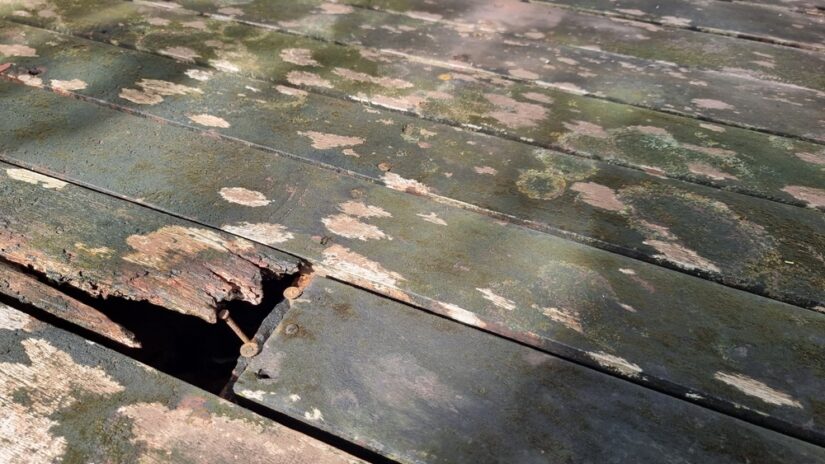
Water damage can manifest in various ways, often making it difficult to identify until significant harm has been done. Common signs include discoloration on walls or ceilings, peeling paint, and musty odors that indicate mold growth. Recognizing these signs early is crucial to preventing costly repairs and potential health hazards.
Homeowners may notice warped floors or soft spots in walls, which can signal more severe underlying issues. Tracking down the source of the moisture is vital, whether it originates from leaks, flooding, or humidity. Addressing water damage promptly can save time and resources in the long run.
Understanding the implications of water damage allows for timely interventions. Ignoring early indicators can result in extensive structural problems and increased repair costs. By familiarizing yourself with these signs, you can better protect your home and investment.
Identifying Common Signs of Water Damage
Recognizing the signs of water damage is crucial for effective remediation. This section examines both visual indicators and hidden signs that may not be immediately obvious.
Visual Clues and Indicators
Common visual indicators of water damage include:
- Stains: Brown or yellowish stains on walls or ceilings often indicate prolonged moisture exposure.
- Peeling Paint or Wallpaper: This can occur when the underlying surface becomes wet, causing the paint to lose adhesion.
- Mold Growth: Dark spots or patches of mold can appear in damp areas, indicating a moisture problem.
These signs typically manifest in areas with plumbing, near windows, or in basements. It’s important to assess any unusual discoloration or texture changes in walls and ceilings. If mold is present, it may pose health risks and require immediate attention.
Hidden Signs in Walls, Ceilings, and Floors
Hidden water damage can be more challenging to identify. Indicators to watch for include:
- Warped or Buckling Floors: When the flooring material swells or lifts, it often signals water trapped beneath.
- Soft or Spongy Walls: Pressing against a wall that feels soft may reveal underlying moisture damage.
- Musty Odors: A persistent smell can indicate mold growth or trapped moisture within building materials.
Using a moisture meter can help detect hidden moisture levels in walls and floors. Regular inspections in areas prone to leaks, such as kitchens and bathrooms, can aid in early detection and prevention of further damage. Address any concerns promptly to prevent extensive repairs.
Consequences of Water Damage on Home Structures
Water damage can significantly affect a home’s structural integrity and can lead to various issues that compromise safety and stability. Some key impacts include:
- Wood Rot: Prolonged exposure to moisture can cause wood to decay, weakening beams and supports.
- Mold Growth: Excessive moisture creates an environment for mold to thrive, which can damage surfaces and be harmful to health.
- Foundation Issues: Water seepage can erode soil under foundations, leading to settling or cracks.
Signs of structural damage include the following:
- Cracked Walls: Vertical or horizontal cracks may appear due to shifting foundations.
- Bowed Walls: Walls that bulge inward can indicate serious structural problems.
- Squeaky Floors: Loose or shifting flooring may signal underlying water damage.
Mitigation is crucial, so addressing water leaks promptly helps to prevent extensive damage. Regular inspections can identify potential issues before they escalate.
Ignoring signs of water damage increases repair costs and risks severe structural failures. Taking proactive measures ensures homes remain safe and sound.
Effective Water Damage Remediation
Addressing water damage promptly can significantly reduce restoration costs and prevent further complications. Key steps include immediate actions to mitigate damage and professional repair services that ensure thorough restoration.
Immediate Steps to Mitigate Damage
When water damage is identified, quick action is crucial.
- Shut Off Power: Ensure electricity is turned off in affected areas to prevent electrocution risks.
- Identify the Source: Locate and stop the source of the water intrusion, whether it’s a leaky pipe or a broken appliance.
- Remove Standing Water: Use a wet/dry vacuum or mops to eliminate standing water.
- Dry the Area: Open windows and use fans to increase air circulation. Dehumidifiers also help remove moisture from the air.
- Salvage Belongings: Remove furniture, carpets, and any affected items. Clean and dry them separately.
These initial actions are vital for limiting damage and beginning the restoration process efficiently.
Got Rot’s Professional Repair Services
Got Rot offers comprehensive solutions for water damage repair and restoration, ensuring properties are returned to their original condition.
- Inspection and Assessment: Our trained professionals assess the extent of the damage and identify any potential hazards.
- Water Extraction and Drying: Advanced equipment is used for complete water removal, followed by thorough drying to prevent mold growth.
- Repairs and Restoration: Got Rot addresses all aspects, including structural repairs, drywall replacement, and flooring restoration.
Our expertise minimizes future risks and restores peace of mind for property owners dealing with water damage.

Preventative Measures for Water Damage
Homeowners should take proactive steps to minimize the risk of water damage. Regular maintenance is vital.
- Inspect Roofs and Gutters: Check roofs for missing or damaged shingles. Clean gutters frequently to ensure proper drainage.
- Seal Windows and Doors: Use caulk or weatherstripping to seal gaps. This prevents water from seeping in during heavy rain.
- Maintain Plumbing Systems: Inspect pipes for leaks or corrosion. Replace old plumbing fixtures to avoid unexpected water issues.
- Install a Sump Pump: A sump pump helps to remove excess water in basements. It can be crucial in preventing flooding.
- Landscape Properly: Grade the land away from the foundation. This directs water away from the home and reduces the risk of pooling.
- Check Appliances: Regularly examine appliances like washing machines and dishwashers. Look for signs of wear or leaks.
- Use Water Detectors: Install water leak alarm systems. They provide immediate alerts, allowing for quick action.
By implementing these measures, homeowners can significantly reduce the likelihood of experiencing water damage in their properties. Regular attention to these areas can protect valuable investments and maintain a safe living environment.